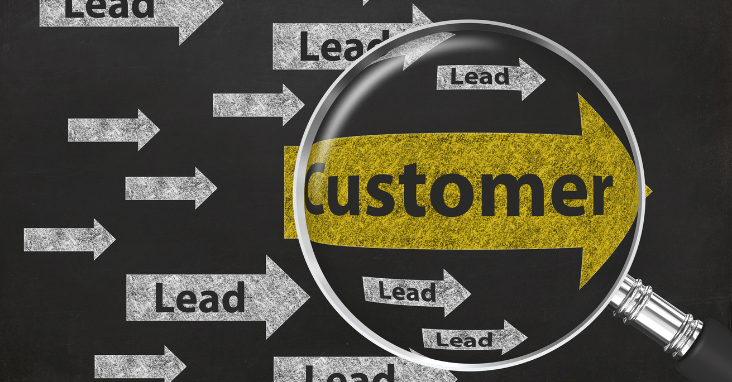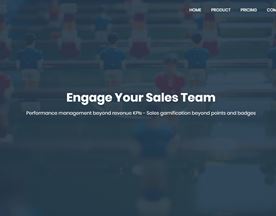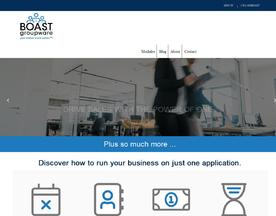In this guide, we will look at the differences between inbound leads and outbound leads and explore methods you can use to develop a strong, sustainable sales pipeline for your business!
What are Inbound Leads?
Inbound leads are potential customers or clients who have expressed interest in a company’s products or services through various online or offline channels, such as visiting a website, filling out a contact form, or attending an event.
Inbound leads are generally a result of inbound marketing efforts like SEO optimization, blog content, and social media engagement.
What are Outbound Leads?
Outbound leads, in contrast, are potential customers or clients a business reaches out to through various marketing methods such as cold calling, email marketing, direct mail, or advertising.
These leads are considered “outbound” because the business generates leads by initiating first contact and attempts to generate interest in its products or services. Unlike inbound leads, outbound leads may not have actively sought out the company or shown interest in its offerings before being contacted.
Advantages of Inbound Leads vs Outbound Leads
There are several key advantages of inbound leads over outbound leads:
Higher conversion rates:
Inbound leads are typically viewed by a sales team as more qualified and engaged than outbound leads, as they have actively sought out a business and shown interest in its products or services. This results in a higher conversion rate, as inbound leads are more likely to become paying customers.
Cost-effective:
Inbound lead generation is generally less expensive than outbound lead generation, as it relies on creating valuable content and optimizing for search engines rather than expensive advertising or cold-calling campaigns.
Long-term sustainable:
Inbound lead generation can create a sustainable and long-term stream of leads, as it focuses on creating valuable content that will continue to attract new leads over time.
Building trust and authority:
By providing valuable content and resources, inbound lead generation can help a business establish itself as a thought leader in its industry and build trust and authority with potential customers.
Targeted audience:
Inbound lead generation allows businesses to attract and engage with a highly targeted audience, as individuals who find a business through inbound channels have already shown interest in its products or services.

Types of Inbound Leads
There are many different types of inbound lead generation techniques. Here are 4 of the most common forms:
Website visitors – One of the most common types of inbound leads are website visitors. These are individuals who have found a business’s website through search engines, social media, or other online channels. Website visitors are considered inbound leads because they have actively sought out the company’s website and have shown an interest in what the company has to offer.
Contact form submissions – Another common type of inbound lead is a contact form submission. These are individuals who have filled out a contact form on a business’s website, expressing interest in the company’s products or services. Contact form submissions are considered inbound leads because they have taken the initiative to reach out to the company and provide their contact information.
Event attendees – In-person events, such as trade shows, conferences, and networking events, can also generate inbound leads. Event attendees are considered inbound leads because they have shown an interest in the company and its offerings by choosing to attend the event.
Social media interactions – Social media platforms can also be used to generate inbound leads. For example, a business can use social media to engage with potential customers, answer questions, and provide valuable information. Interactions on social media can be considered inbound leads if the person has shown interest in the company’s products or services and has provided their contact information.
It’s important to note that not all website visitors, contact form submissions, event attendees, or social media interactions will become paying customers. However, by tracking and analyzing the behavior and demographics of inbound leads, a business can identify which leads are more likely to convert and prioritize them in the lead nurturing process.
Inbound Lead Generation Strategy
The most effective way to generate inbound leads is by creating valuable content that addresses the needs and interests of potential customers. This can include blog posts, e-books, infographics, videos, and more. By providing valuable information, a business can establish itself as a thought leader in its industry and attract interested individuals to its website.
Optimizing for Search Engines:
Another important aspect of generating inbound leads is search engine optimization (SEO). This involves optimizing a website’s content and technical elements to improve its visibility and ranking in search engine results pages (SERPs). By appearing at the top of SERPs for relevant keywords, a business can increase its visibility and attract more website visitors.
Utilizing Social Media:
Social media platforms can also be used to generate inbound leads. By actively engaging with potential customers on social media, a business can build relationships and generate interest in its products or services. This can include sharing valuable content, answering questions, and providing information about upcoming events or promotions.
Hosting Events and Webinars:
In-person events and online webinars can be an effective way to generate inbound leads. By providing valuable information, answering questions, and building relationships with attendees, a business can attract interested individuals and generate leads.
Generating inbound leads takes time and effort, but by following these strategies, a business can establish itself as a trusted resource and attract interested individuals to its website.

Nurturing Inbound Leads
Segmenting leads based on behavior and demographics: Once inbound leads are generated, it’s important to segment them based on their behavior and demographics. This can include factors such as their website activity, the pages they’ve visited, the forms they’ve filled out, and their interests and needs. By segmenting leads, a business can tailor its communication and resources to better meet the needs of each group.
Personalizing communication: Personalizing communication is another important aspect of lead nurturing. This can include sending targeted emails, direct mail, or even personalized phone calls. By personalizing communication, a business can increase the relevance of its messages and build stronger relationships with leads.
Providing valuable resources: Providing valuable resources such as e-books, whitepapers, and webinars can help a business establish itself as a trusted resource and provide leads with valuable information to help them make purchasing decisions.
Continuously measuring and optimizing the lead generation process: Continuously measuring and optimizing the lead generation process is crucial to ensuring that the business is effectively nurturing its leads and converting them into paying customers. By setting goals, tracking key metrics, and analyzing lead conversion rates, a business can identify areas for improvement and optimize its lead nurturing strategy.
By effectively nurturing inbound leads, a business can increase the likelihood that leads will convert into paying customers and improve its overall ROI.

Measuring and Tracking Inbound Leads
Setting goals and metrics: Setting clear goals and metrics is the first step in measuring and analyzing inbound lead performance. These goals and metrics should be specific, measurable, and aligned with the overall business objectives. Examples of goals and metrics include lead conversion rate, website traffic, and email open rate.
Tracking lead sources: Tracking lead sources is another important aspect of measuring and analyzing inbound lead performance. By identifying where leads are coming from, a business can understand which marketing channels are most effective and allocate resources accordingly.
Analyzing lead conversion rates: Analyzing lead conversion rates is crucial to understanding the effectiveness of the lead generation and nurturing strategy. By tracking the number of leads that convert into paying customers, a business can understand the return on investment for its lead generation efforts and identify areas for improvement.
Identifying areas for improvement: Identifying areas for improvement is the final step in measuring and analyzing inbound lead performance. By analyzing lead behavior, demographics, conversion rates, and other metrics, a business can identify areas where its lead generation and nurturing strategy can be improved and make data-driven decisions to optimize its efforts.
By measuring and analyzing inbound lead performance, a business can understand the effectiveness of its lead generation and nurturing strategy, identify areas for improvement, and make data-driven decisions to optimize its efforts and improve return on investment.
Inbound Lead Software
There are several types of software that can help businesses manage and optimize their inbound lead-generation efforts:
Marketing Automation Software: Marketing automation software allows businesses to automate repetitive tasks, such as email campaigns, lead nurturing, and lead scoring. This software can help businesses streamline their lead-generation efforts and increase efficiency. Examples include HubSpot, Marketo, and Pardot.
CRM (Customer Relationship Management) software: CRM software helps businesses manage and track interactions with leads and customers. This software can store contact information, track lead progression, and manage sales and marketing campaigns. Examples include Salesforce, Zoho, and Pipedrive.
Content Management Systems (CMS): Content management systems (CMS) are used to create, manage, and publish content on websites. This software can be used to optimize website content for search engines and improve lead-generation efforts. Examples include WordPress, Joomla, and Drupal.
Lead capture and form software: Lead capture and form software allows businesses to easily create and manage forms on their website. This software can be used to collect contact information from leads, such as email addresses and phone numbers. Examples include Leadformly, Unbounce, and Formstack
Analytics and tracking software: Analytics and tracking software can help businesses measure the effectiveness of their lead-generation efforts. This software can be used to track website traffic, analyze lead conversion rates, and identify areas for improvement. Examples include Google Analytics, Mixpanel, and Omniture.
This software can be used together or separately, depending on the business needs and goals and the size of the company. Some companies offer a holistic solution that includes multiple functionalities, such as marketing automation, CRM, and analytics, in one platform. – Find: Sales Software
Conclusion
Inbound leads are an essential component of modern marketing and a key driver of business growth. By implementing a well-executed inbound lead generation strategy, businesses can increase their customer base and revenue and improve their marketing ROI. The process of generating inbound leads includes creating valuable content, optimizing for search engines, utilizing social media, and hosting events and webinars.
Once leads are generated, it’s important to nurture them by segmenting them based on behavior and demographics, personalizing communication, providing valuable resources, and continuously measuring and optimizing the lead-generation process. Measuring and analyzing inbound lead performance is also crucial to understanding the effectiveness of the lead generation strategy and identifying areas for improvement.
By setting goals and metrics, tracking lead sources, and analyzing lead conversion rates, a business can make data-driven decisions to optimize its inbound lead generation strategy and increase revenue. Overall, inbound lead generation is a complex process that requires a well-executed strategy, but the rewards for businesses that invest in it, can be significant.















